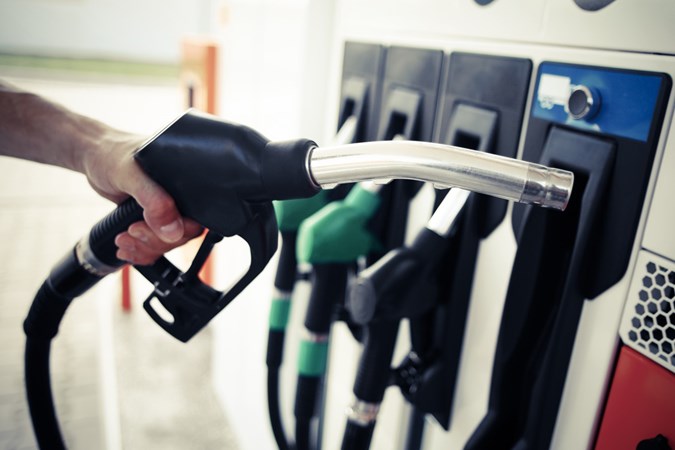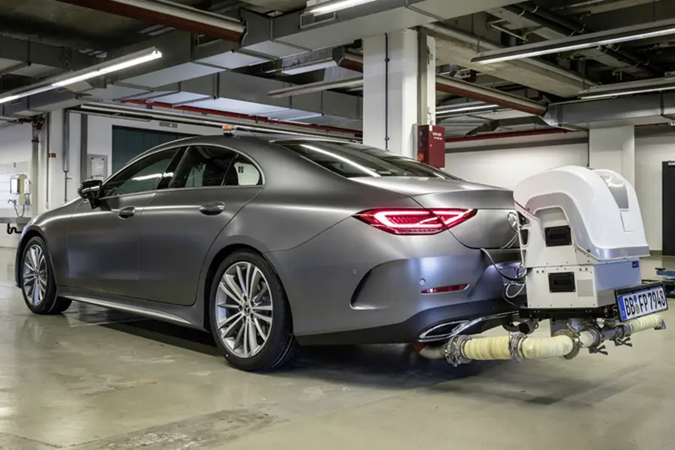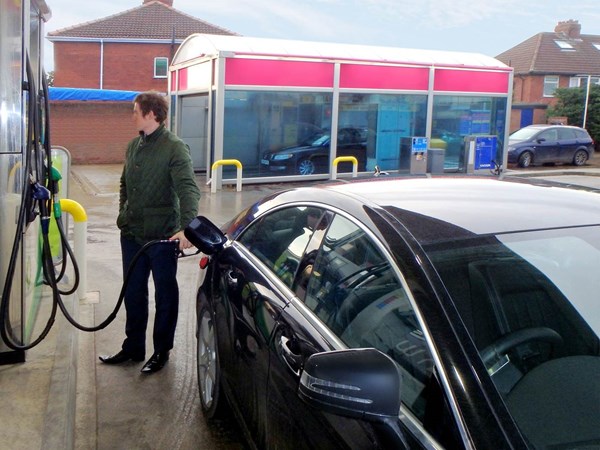Look at the ownership cost section of the Parkers review for any petrol, diesel or hybrid car and you’ll see it’s peppered with figures followed by the letters MPG. They stand for miles per gallon and tell you how much fuel the car uses.
The figures can seem entirely arbitrary and it’s not at all clear how trustworthy they are. Especially as there are myriad factors that can influence a car’s MPG. Not least whether it’s a petrol, diesel or hybrid car.
In this guide, we’re going to explain everything you need to know about MPG, what it means for you, and what you can do it improve your car’s MPG.
What does MPG mean?
MPG stands for miles per gallon and it’s the unit of measurement for a car’s fuel economy – how efficient it is, in other words – that we use in the UK. It’s very much a ‘does what it says on the tin’ kind of measure, as it tells you how many miles a car can cover per gallon of fuel used.
If a car does 30mpg, it can cover 30 miles for every gallon of fuel used. It’s as simple as that. The most economical cars currently on sale do more than 65mpg.
There’s a set of ‘official’ MPG numbers for every car sold in the UK. ‘Urban’ MPG numbers tell you how much fuel a car uses while driving round town and ‘extra-urban’ MPG indicates fuel usage when driving out of town. The most relevant figure, though, is the ‘combined’ MPG, which is a measure of a car’s overall fuel usage when driven on a variety of different roads.
At Parkers, we quote the combined MPG numbers, though we also manually calculate average MPG if we have the opportunity to do so.

How are official MPG figures worked out?
In Europe and the UK, the way a car’s official MPG figures are calculated is laid out in regulations set by the European Union. The current set of regulations is called the Worldwide Harmonised Light Vehicle Test Procedure, or WLTP for short.
The tests are carried out both in a lab and on real roads. A prescribed cycle of acceleration and braking events is driven several times and the MPG calculated from how much fuel was used. The WLTP cycle is designed to reflect how people drive in the real world; the previous set of regulations – known as NEDC – didn’t do that and often produced wildly optimistic MPG numbers as a result.

How accurate are official MPG figures?
WLTP MPG figures are generally pretty accurate for petrol and diesel cars. But there are so many things that influence the MPG you can get from your car that the official figures should only be taken as a rough guide. We’ll go over what those influencing factors are a bit later.
Less accurate are the WLTP MPG figures for plug-in hybrid cars. For instance, the Mercedes-Benz S580e records an official combined MPG figure of 353. But your chances of actually achieving that are remote at best. That’s because the WLTP driving cycle for plug-in hybrids is designed to maximise running on battery power in a way that few can in practice.

How do I work out my car’s MPG?
Pretty much every car on sale in the UK has a trip computer. Among its readouts you’ll find the car’s ‘live’ MPG, and the long-term average MPG. But the numbers shown aren’t necessarily completely accurate. If you want to know for sure how much fuel your car is using, you need to manually calculate its MPG.
First, you need to fill your car’s fuel tank until the pump clicks off. Then take a note of the car’s mileage. Next time you fill up, note how much fuel has gone in and how many miles you’ve covered since the last fill up. You also need to convert litres to gallons. Those numbers can then be used to work out the car’s MPG.
Let’s imagine 60 litres of fuel went into your car and you covered 476 miles. Here’s what the calculation would look like:
60 litres ÷ 4.546 litres per gallon = 13.198 gallons
476 miles ÷ 13.198 gallons = 36.067mpg

What factors affect a car’s MPG?
There are a vast number of factors that influence what MPG a car is capable of returning. Everything from how much power it has to its shape and weight, even what kind of tyres it has. That’s a why small, light, sleek city car will always be more efficient than a whopping-great SUV.
But what ultimately determines how close you can get to your car’s official MPG figures is what kind of roads you drive on, and how you drive.
For instance, cars are much less efficient when driving in stop-start town traffic than they are on long stretches of 50-60mph A-road. And if you accelerate and brake heavily, you’ll get through more fuel than if you drive gently and smoothly.

Are there other ways of quantifying a car’s fuel economy?
MPG is just one measure of fuel economy that’s used in the UK and a few other countries that still use imperial measurements. The USA also uses MPG, albeit based on the smaller American gallon and a different testing procedure.
In countries that use metric measurements, fuel economy is usually given as l/100km (litres per one hundred kilometres) or sometimes as km/l (kilometres per litre).
Another measure of vehicle efficiency we’ll have to get used to as we move into the electric car era is mpkWh (miles per kilowatt hour). It tells you how you can go per kilowatt hour of electricity stored in the car’s battery.
What can I do to improve my car’s MPG?
There are many things you can do to improve your car’s MPG. Some things are relatively easy, like removing a roof rack when you’re not using it or closing the car’s windows. Emptying the boot of heavy stuff you don’t really need to cart around helps, as well. You should also have your car serviced regularly and keep the tyres pumped up to the correct pressure.
Other techniques can take a bit of time to perfect, like altering your driving style to be smoother and gentler, and changing gear earlier. Changing regular routes to avoid congested areas can make a big difference, too.

FAQs
What does miles per gallon mean?
Miles per gallon – or MPG – is a measure of a car’s fuel economy. It basically tells you how far the car can go on a given quantity of fuel. The higher a car’s MPG numbers, the more economical it is. At the top of this page, you can read much more about MPG.
What is miles per gallon in the UK?
In the UK, miles per gallon is a measurement of how much fuel a car uses, as it is in any other country that uses the imperial system. However, UK MPG numbers are different in the UK than in the USA. That’s because a different method is used to work fuel economy on the other side of the Atlantic, and the American gallon is slightly smaller.
Why? In the early days of travel to America, the wooden barrels water was carried would leak during the voyage. But the measurement wasn’t adjusted to account for the leakage – a 100-gallon barrel was still considered to contain 100 gallons, despite the leakage. And that’s why 1 US gallon is equal to 0.83 UK gallons.
What is good MPG?
What can be considered good MPG depends on many factors: what sort of car you have, what sort of roads you drive on, what the traffic conditions are like, and so on. For instance, if you drive a big diesel SUV on the motorway when traffic is light, 47mpg is good. If you drive a mid-size family car through a city at rush, 25mpg is good. Thrash a high-power sports car along a country road and 20mpg is good.
Looking for more jargon-busting motoring meanings? Head over to our Parkers Car Glossary page and take a look at our other definitions.
Just so you know, we may receive a commission or other compensation from the links on this website - read why you should trust us.
















